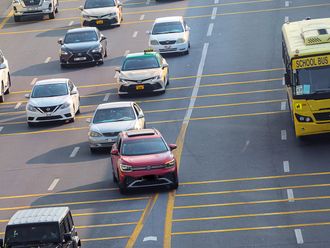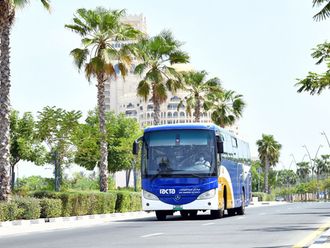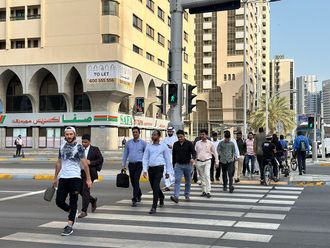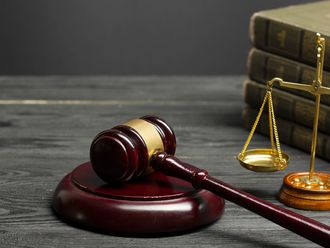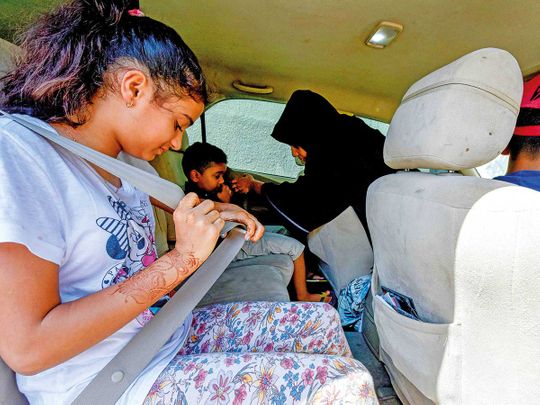
Sharjah: A comprehensive federal seat belt law came into force in the UAE in 2017, making seat belts for rear seat passengers and child seats mandatory. However, a new study shows that the implementation has been lax, with only one-sixth of the passengers seen to be using the seat belts.
The new study by researchers from the University of Sharjah reveals that compliance with the seat belts law has been minimal after more than a year of its introduction, highlighting the need to step up enforcement by the authorities.
A total of 1,903 vehicles with 3,569 rear seat passengers were observed for the study, with only 12.3 per cent of found to be wearing the seat belts.
Laws to enforce rear seat belt use should be accompanied with rigorous awareness campaigns that would help in raising public awareness on the importance of wearing rear seat belts in order to change the public behaviour in this regard.
At 8.8 per cent, the number was the lowest in Sharjah, while Fujairah recorded the highest seat belt wearing rate among rear seat passengers at 16.2 per cent.
In Dubai, the seat belt wearing rate stood at 14.7 per cent while Ajman has only 10.1 per cent rear seat passengers wearing seat belts.
According to researchers the UAE’s estimated rear seat belt wearing rate is significantly lower than many developed country's with statistics showing 89 per cent of rear-seat passengers in England and Scotland using seat belts or child restraints.
Published in the latest edition of the Institution of Occupational Safety and Health’s (IOSH) Policy and Practice in Health and Safety journal, the study involved direct roadside observations of rear seat passengers, followed by data gathered from self-reporting questionnaires.
What needs to be done?
A random sample of 511 car passengers across the country was surveyed. Less than one-sixth of the respondents saying they wear seat belts or ask rear seat passengers to wear their belts.
This, despite the fact that close to two-thirds of them said they believed in the importance of wearing seat belts even when in the back seat.
According to the researchers, the estimated financial loss due to road accidents constitutes 1.3 per cent of GDP in the UAE, equivalent to the country’s entire GDP growth in 2017. The road traffic fatalities rate per 100,000 population in UAE is 10.9, compared to just 2.9 in the United Kingdom.
In a statement, researchers Dr Salah Al Din Bendak and Sara Al Naqbi of the University of Sharjah said: “Laws to enforce rear seat belt use should be accompanied with rigorous awareness campaigns that would help in raising public awareness on the importance of wearing rear seat belts in order to change the public behaviour in this regard.”
Pushing for stricter enforcement, Matt Jackson, Chair of IOSH’s UAE Branch, said: “The research provides alarming statistics considering road related accidents are still one of the biggest contributors to deaths in the UAE. The need for drivers of the vehicle to be held accountable is key. They are in control of the vehicle and it’s their obligation to ensure all passengers are wearing seat belts before the vehicle moves, like a heavy goods driver being responsible for its load.”
How does it work?
“Wearing seat belts in cars is the same as using helmets on motorbikes. This is a life protection measure,” said Abdul Razaq, assistant technical manager at Emirates Driving Institute Dubai.
“Your body travels at the same speed as the vehicle and in case the vehicle stops abruptly, whether it’s a hard stop or an accident, your body will continue moving forward. Something has to stop that motion and airbags usually aren’t enough. Do you want ‘that’ to be a seat belt or the windshield?” he added.
Elaborating further, Abdul Razaq said that seat belts prevent excessive injury when a vehicle needs to slow down abruptly.
“This applies whether you are in the driver’s seat, passenger’s seat or if you are in the rear seat.”
He suggested strict enforcement of the law through heavy penalties as the first step to make people obey the rule.
“Lack of awareness is the reason people are taking it lightly. There is a need for different kind of awareness campaigns to make people understand the consequences of not wearing a seat belt,” he said.
How do seat belts protect you?
- In case of an accident, seat belts help avoid contact between the occupant and any other object
- Seat belts significantly reduce the risk of passengers being thrown out of a vehicle
- Seat belts are known to save up to 80 per cent of lives, depending on the type of impact and the age of the passenger



